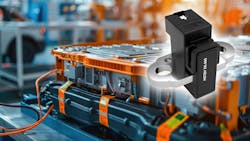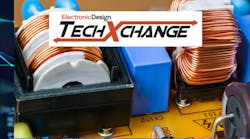Current Sensors Evolve to Elevate EV Battery-Management Accuracy
The battery packs in electric vehicles (EVs) are only as safe and effective as the battery-management system (BMS) watching over it. The BMS plays a pivotal role in the EV, monitoring the voltages in the battery cells as well as the voltage, current, and temperature of the larger battery pack over its lifetime.
It carefully manages all of these characteristics to keep them within a tight safe operating area (SOA). In that way, the BMS makes sure the EV battery runs reliably and safely while maximizing its performance and longevity.
Besides wringing as much power out of the EV as possible and improving its maximum driving range, the BMS also protects the battery pack against short circuits and other transients that can cause catastrophic failures and even permanent damage.
To continuously and accurately monitor the internal status of EV batteries, LEM introduced its new class of Hall-based, open-loop current sensors called the single monitoring unit (SMU). The current sensor assists in the precise estimation of the state of charge (SOC), which is the remaining charge of the high-voltage battery pack. LEM said the SMU is ideal for EV battery management as it can handle currents from 100 to 1,500 A.
Understanding the ins and outs of current being distributed around the EV is a critical factor in design. In that regard, current sensors are on the front lines of monitoring the power traveling to and from the battery and its loads.
>>Check out these TechXchanges for similar articles and videos
During charging and discharging, high current flows into and out of the battery, which generates heat. Every battery performs best within a very tight temperature range, where it operates safely and ages very slowly. To protect the battery pack from overstress, current must be carefully regulated to limit heat and reduce power losses.
Higher Accuracy Driven by SMU’s SoC
The SMU is more active than passive when sensing current, said LEM. The product contains the company’s latest system-on-chip (SoC) to run software to correct or adjust measurements, enabling it to correct for distortions and other errors caused by mechanical stresses in the EV battery. The algorithms enhance the sensor’s precision, making it possible to accurately measure currents to within 1% at up to 1,300 A and 1.7% at up to 1,500 A, said LEM.
Specifically, the SMU is targeted at the battery disconnect unit (BDU). The SoC inside makes it possible to accurately monitor the current in the battery pack despite the harsh environmental conditions in the EV.
The BMS oversees everything relating to modern EV battery packs, which are constructed out of clutches of lithium-ion (Li-ion) cells connected in series that can handle operating voltages up to 400 V or 800 V. Despite the high energy density of the Li-ion formulations, these batteries tend to be fragile. Overcharging or undercharging the battery’s cells can lead to premature charge termination, reduce its operating lifespan, or cause failures or even conflagrations. Damage during a collision and other physical stress can trigger these problems, too.
Other Key Components of the BMS
The high-performance MCU at the heart of the BMS calculates the SOC and state-of-health (SOH) as well as adjusts the charging and depletion rates to maximize both metrics. And the cell monitoring unit (CMU) in the BMS is used to closely monitor the situation at the cell level and then communicate it to the MCU to ensure safety and reliability. While the CMU focuses on the battery’s cells, the BDU monitors the pack as a whole.
The unit is comprised of contactors, fuses, pre-charge circuits, and current sensors that connect the high-voltage battery to loads, including the traction inverter and onboard charger (OBC). When it’s in danger, the unit unplugs it from these different loads. Located directly inside or on top of the battery pack, the BDU is not only used to prevent short circuits or other safety hazards, but also to facilitate accurate SOC estimation.
The SMU is designed to be placed directly on the busbars used to distribute power from the battery pack to the rest of the EV, and it can run diagnostics and detect undervoltage or overvoltage or other unusual conditions under the hood. LEM said it can also prevent malfunctions by entering a safe state mode when it detects any drift in the sensitivity of the current sensors. Furthermore, it enters the safe mode in the event of errors in temperature measurements from the EV battery pack, which can influence the current sensing.
The current sensor is compact, measuring 29.1 × 35.5 × 49.9 mm. The busbars bolted to both sides of the SMU save space and improve accuracy, according to LEM, and they’re designed to accommodate a wide range of different busbar dimensions.
The SMU is not unlike other Hall-based current sensors in that it senses current by measuring the difference in the magnetic field created when current travels out of the battery and through the busbars connecting it to different loads. The MCU inside the current sensor uses software to remove noise from stray magnetic fields. LEM said that results in more accurate and reliable current sensing by eliminating errors caused by residual magnetism.
Safety Measures with the SMU and BDU
The SMU not only applies its more accurate pack-level measurements to maximize the battery’s useful capacity and boost the EV’s range, it also plays a central role in EV safety and reliability. The current sensor integrates isolation, making it possible to handle voltage differences of more than 800 V between components or between the device and its surroundings, said LEM. High-voltage isolation ensures safety, and it helps reduce electromagnetic interference (EMI) prevalent in the EV.
One of the main responsibilities of the BDU is the detection and prevention of short circuits or other surges of current that can lead to catastrophic failure of the battery pack, or even cause it to erupt in flames. If any of the battery cells are overcharged or undercharged, they can overheat uncontrollably in a thermal runaway. Thermal runaway can also happen when one of the cells is physically damaged or suffers a short circuit. Moreover, overheating in one cell can cause other cells in the EV to ignite, resulting in hot-burning battery fires.
The SMU is also highly robust. The first chip in the family fits the requirements for ASIL B under the ISO 26262 functional-safety standard, with the possibility to extend it to ASIL C, said LEM.
Next in Current-Sensor Products: 2024
Read More About Current Sensors
About the Author
James Morra
Senior Editor
James Morra is the senior editor for Electronic Design, covering the semiconductor industry and new technology trends, with a focus on power electronics and power management. He also reports on the business behind electrical engineering, including the electronics supply chain. He joined Electronic Design in 2015 and is based in Chicago, Illinois.






